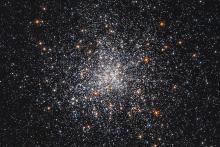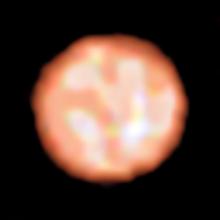Listen to today's episode of StarDate on the web the same day it airs in high-quality streaming audio without any extra ads or announcements. Choose a $8 one-month pass, or listen every day for a year for just $30.
You are here
Muscida
Ursa Major, the great bear, may be the most famous constellation that isn’t well known. That’s because most of us know it for a pattern formed by only some of its stars: the Big Dipper. But few know that the dipper’s bowl forms the body of a bear, while its handle represents the bear’s tail.
The Dipper is high in the sky at nightfall right now, with the bowl hanging upside down. But there’s much more to the bear than just the dipper. His long legs and the rest of his body extend well below and to the left of the Big Dipper.
The star at the bear’s nose is far below the bowl — by about twice the width of your fist held at arm’s length. It’s known as Muscida — a Latin name that means “the muzzle.” And it’s about to undergo a big change.
The star is classified as a giant. As you might expect, that means it’s much bigger and brighter than the Sun. It’s so bright that it’s easily visible even though it’s about 180 light-years away.
Right now, the star’s heart is quiet. It’s converted its original hydrogen fuel to helium. It hasn’t yet moved on to the next step — but it’s about to. The core is getting smaller and hotter. That will trigger the next round of nuclear reactions — converting the helium to carbon and oxygen. As that happens, the star’s outer layers will puff up even more. That’ll make the star brighter and redder. For a while, the bear’s nose will resemble that of a certain famous reindeer — bright, shiny, and red.
Script by Damond Benningfield





